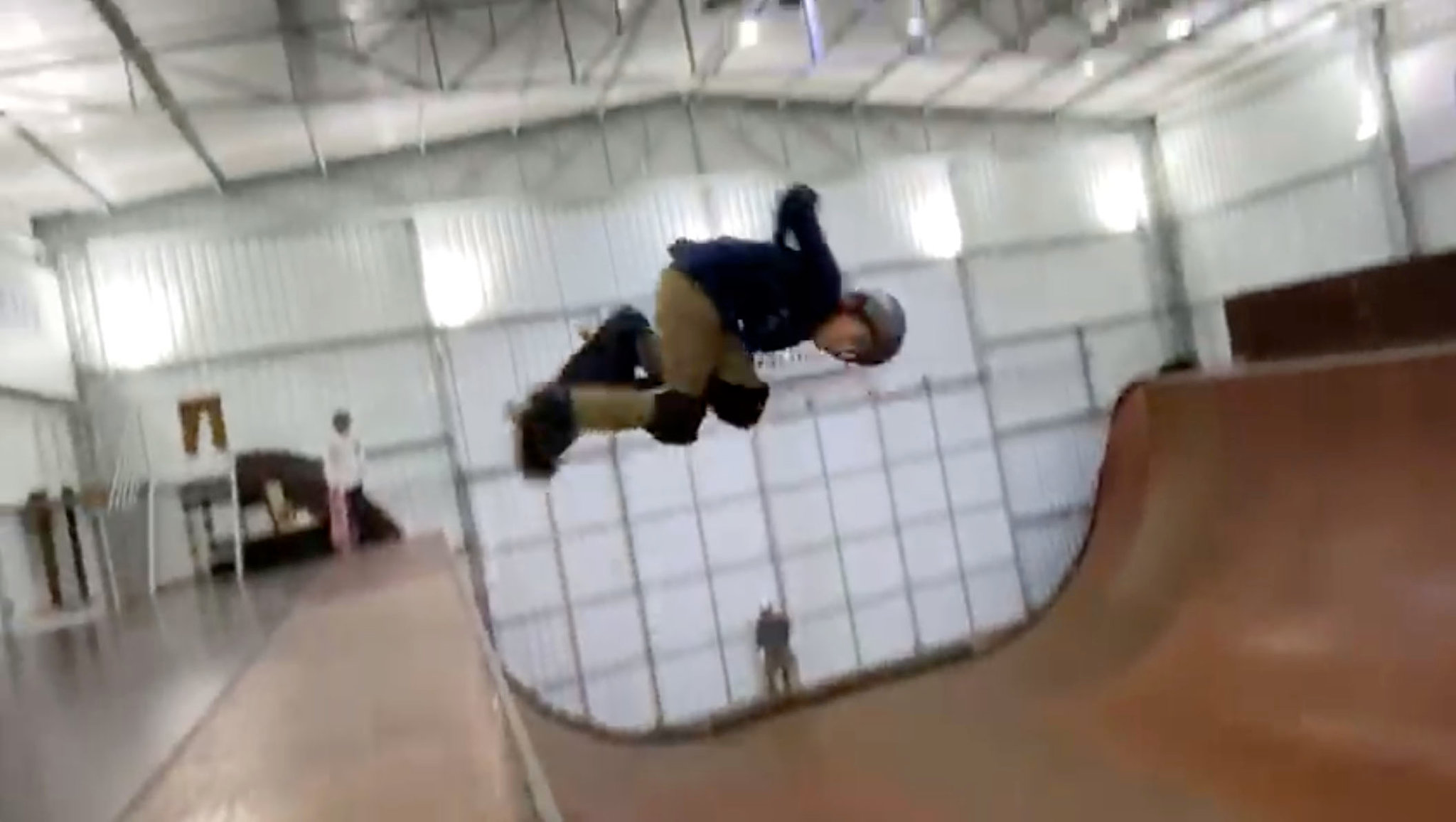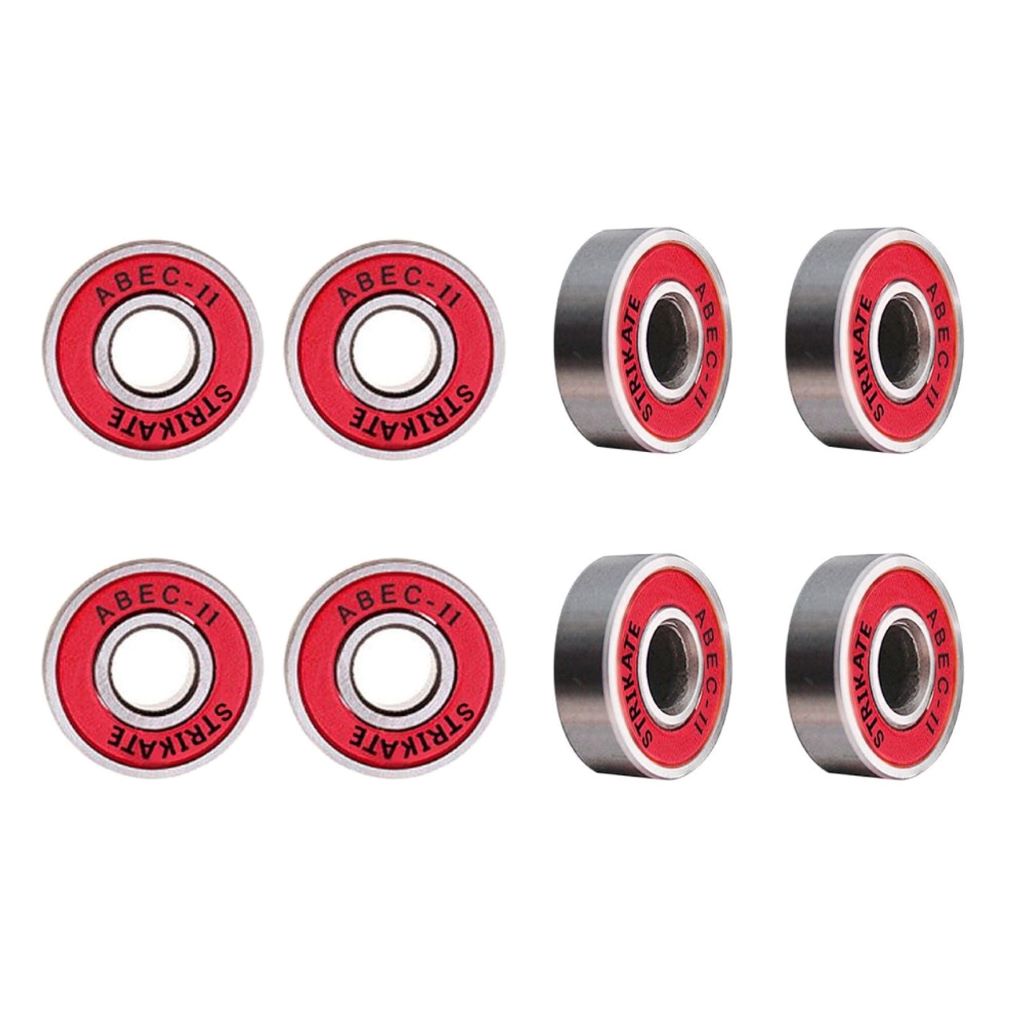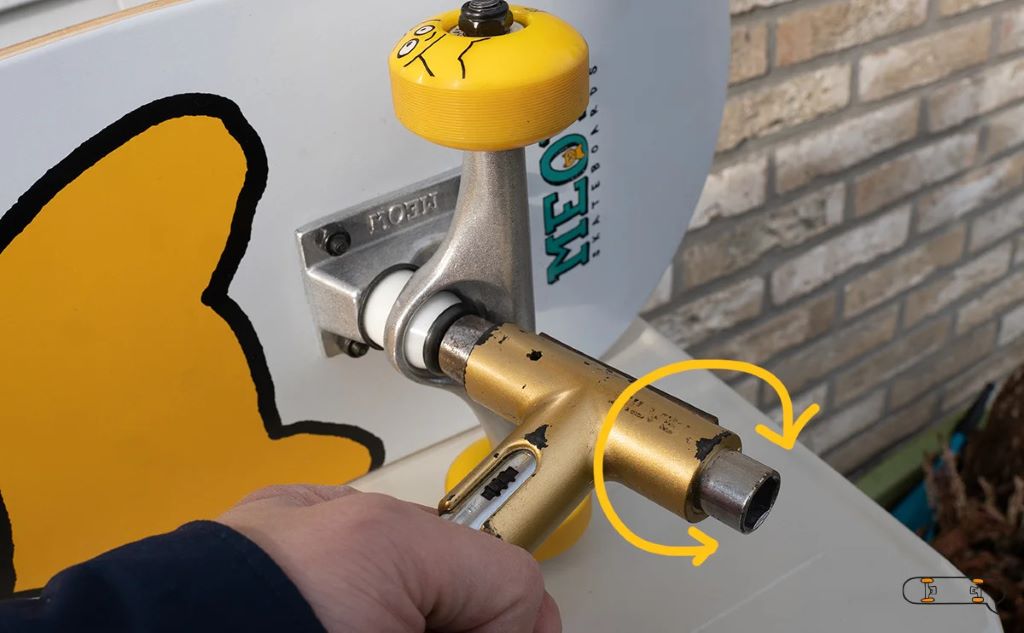The hardest skateboard trick is often considered to be the 1080-degree aerial spin. This move was first landed by 12-year-old skateboarder Tom Schaar in 2012.
Skateboarding is continuously evolving, with skilled riders pushing the limits of what’s possible on a board. Among these challenges, executing a 1080-degree aerial spin stands as a monumental feat, achieved by only a handful of skateboarders globally. Completing three full rotations in the air before landing requires immense skill, balance, and control.
Enthusiasts and professionals alike recognize this trick as a pinnacle of skateboarding prowess. Breaking down the boundaries of physics and athletic artistry, the 1080 captures the essence of modern skateboarding: the constant pursuit of innovation and perfection. Whether done on a mega ramp or in a competition, successfully performing this trick cements a skateboarder’s name in the annals of the sport’s history.
Understanding Gravity And Momentum
Skateboarding is not just a sport; it’s an art form, a lifestyle, and a physical challenge that defies the ordinary limits of gravity and momentum. Every ollie, kickflip, and grind is a testament to the skateboarder’s understanding of these two fundamental forces. Whether you’re an aspiring Tony Hawk or just curious about the physics behind the hardest skateboard tricks, this section will enlighten you about the fascinating interplay of gravity and momentum on the ramp.
Explaining The Concept Of Gravity In Skateboarding
Gravity is the invisible force that grounds both novice and pro skateboarders alike. It’s the weight that pulls riders to the earth, crucial when maintaining balance and executing tricks.
- Drop: When a skateboarder takes off from a ramp, gravity pulls them back down. The trick is to manage this descent to land smoothly.
- Airtime: Achieving height in a trick is directly challenging gravity’s pull. To master this, skateboarders need both skill and an understanding of this force.
- Landing: The force at which a skateboarder lands is governed by gravity. Managing this force ensures that the rider can land without injury and maintain speed after the trick.
In essence, gravity is the skateboarder’s ever-present rival and partner in the dance of aerial tricks. Mastering skateboarding requires manipulating gravity to one’s advantage, a skill that becomes second nature through practice and experience.
How Momentum Plays A Crucial Role In Defying Gravity
Momentum, an object’s quantity of motion, is a skateboarder’s best friend when it comes to defying gravity. This is the force that propels skateboarders forward and allows them to perform awe-inspiring tricks. Now let’s break down how critical momentum is:
| Action | Role of Momentum |
|---|---|
| Takeoff | Momentum helps to catapult the skateboarder into the air, fighting against gravity’s pull. |
| Mid-air Maneuvering | The momentum gathered during takeoff allows for rotations, flips, and tweaks while airborne. |
| Landing Transition | Maintaining momentum is crucial for a smooth transition upon landing, to keep riding seamlessly. |
To harness momentum, calibration of speed and direction is key before a trick. As they push off, skateboarders use ground reaction force to gain momentum. As they soar, maintaining this momentum is crucial for mid-air stability and a successful landing.
From Ollies To Impossible: A Historical Perspective
Welcome to the spellbinding world of skateboarding, where athletes glide across concrete canvases, turning the physics of motion into breathtaking pieces of art. From Ollies to Impossible: A Historical Perspective takes you on a journey through skateboarding’s evolution, showcasing how simple hops transformed into complex, airborne magic. Witness the legendary leaps of history, where every flip and spin tells the tale of a sport perpetually reinventing itself.
Tracing The Origins Of Skateboarding Tricks
Skateboarding’s ancestral roots delve deep into the 1940s and 1950s when surfers in California sought a thrill on land akin to their aquatic adventures. These pioneers repurposed wooden boxes and roller skate wheels, spawning the skateboard’s primitive ancestor. Over time, this led to the inception of the trick we now know as the ‘ollie’.
The ollie, invented by Alan “Ollie” Gelfand in the late 1970s, became a fundamental building block for numerous other tricks. This no-handed aerial maneuver became the foundation from which the skateboarding trick repertoire would exponentially expand. It is a fundamental skill mastered by skaters before venturing into more complex territory.
Breakdown Of The Progression From Basic Tricks To Gravity-defying Stunts
With the ollie entrenched as a stepping stone, the doors flung open to an era of experimentation. Skaters began stringing moves together, elevating their craft into a form of self-expression defined by audacity and precision.
- The 1980s: The decade gave rise to vert skateboarding, with pioneers like Tony Hawk pushing vertical boundaries.
- 1990s: Street skating surged in popularity, with tricks like the kickflip (invented by Rodney Mullen) becoming staples.
- 2000s and beyond: The quest for innovation persists, as seen in the rise of mega ramps and feats like Danny Way’s Great Wall of China jump.
Skateboarding’s inexhaustible capacity for difficulty is encapsulated in the ‘Impossible,’ where the skateboard wraps a full 360 degrees around the rider’s back foot mid-air—a spellbinding spectacle of finesse and gravity defiance. The name itself suggests the barrier-skirting nature of skateboarding evolution.
From humble pavement poundings to high-flying spectacles, skateboarding’s timeline is a marvel of human potential. Bold pioneers and subsequent generations continue to redefine what’s possible on four wheels and a board, ensuring that the hardest skateboard trick of today becomes the warm-up routine of tomorrow.
Analyzing The Difficulty Of the Hardest Skateboard Trick Ever – Defying Gravity!
Skateboarders worldwide continuously push the limits of physics, performing tricks that challenge both gravity and human capability. Among these feats, a particular trick stands out as a testament to the heights—quite literally—skateboarding can reach. This trick, often whispered about in skate parks and forums, represents a blend of precision, skill, and sheer audacity. Today, we delve into the mechanics and the drama of attempting what is arguably the hardest skateboard trick ever.
Examining The Technical Complexity Of The Most Challenging Skateboard Trick
Every skateboard trick requires a unique combination of timing, balance, and control. When examining the most complex maneuvers, one can’t help but be in awe of the balletic precision they demand. Consider the intricate footwork, the split-second decisions, and the need for spatial awareness that must harmonize for a successful execution.
- Foot positioning: A key factor where the slightest misstep can lead to failure.
- Rotational dynamics: Understanding the principles of physics that allow a skater to spin and flip simultaneously.
- Board control: Maintaining a grip on the skateboard throughout the trick’s duration, often defying gravity itself.
| Element | Requirement | Challenge Rating |
|---|---|---|
| Footwork | Precision | High |
| Spin | Speed & Control | Extreme |
| Gravity | Defiance | Maximum |
Insights From Professional Skateboarders On The Physical And Mental Demands
Professional skateboarders who have attempted or mastered this formidable trick shed light on the physical and mental hurdles involved. Dedication and resilience are common themes, with many recounting countless hours of practice leading to bruised bodies and bruised egos alike.
Physical Strain: High-impact landings take a toll on a skater’s body, demanding excellent fitness and endurance.
Mental Grit: The psychological pressure to perform and overcome fear plays a critical role. Skateboarders often speak of being in a state of “flow”, where focus blurs out all distractions, allowing them to engage fully with the trick at hand.
- Understand and respect the complexity of the trick.
- Commit to rigorous practice and muscle memory development.
- Build mental fortitude to face and conquer the fear of high-stakes failure.
Unconventional Techniques And The Future Of Skateboarding
Skateboarding constantly evolves, tearing through the limits of what we once thought impossible. As riders around the world push the boundaries, unconventional techniques emerge—leading to a transformative era in skateboarding. Each trick seems harder than the last, challenging skaters to think outside the box and get creative. It sparks a question: How will the fusion of innovation and technology shape the future of skateboarding tricks?
Exploring Unconventional Approaches To Defying Gravity On A Skateboard
The quest for the hardest skateboard trick leads enthusiasts to explore unconventional approaches. Traditional flips and grinds no longer suffice as skaters combine aerial acrobatics with land-based maneuvers, resulting in a symphony of movement that defies gravity. Such creativity not only pushes the individual skater but also propels the culture forward, inspiring others to take their skills to new heights. Imagine a world where a skateboarder takes off from the pavement and executes a routine that rivals gymnastics—all while suspended mid-air on four wheels.
- Magnetic Trucks: Utilizing magnetism to alter board control.
- Gyroscopic Wheels: Enhancing balance and allowing for unprecedented rotations.
- Variable Shape Decks: Boards that shift shape mid-air to accommodate the skater’s feet and trick requirement.
A Glimpse Into The Future Of Skateboarding Tricks With Advancing Technology
Advancements in technology not only impact our daily lives but also the future of skateboarding tricks. AI-enhanced training programs are already helping skaters optimize their technique, with virtual reality platforms providing a risk-free environment for attempting and mastering complex maneuvers. 3D-printed custom skateboards tailored to the individual’s style and body type might become the norm, incorporating materials designed for optimal performance and durability.
| Technological Advancement | Potential Impact on Skateboarding |
|---|---|
| Wearable Tech | Real-time performance tracking and safety monitoring. |
| Smart Skateparks | Interactive environments that adapt to skaters’ styles and skills. |
| Robotic Skateboard Assistants | Hands-on training aids that offer immediate feedback and coaching. |
Imagine a skater, equipped with sensors that analyze every turn and flip. Data feeds into an algorithm, calculating the perfect trajectory for landing that elusive trick. The fusion of these technologies is not just fantasy but the foreseeable future that will elevate the artistry and athleticism of skateboarding to unprecedented levels. As the community looks ahead, one thing is certain—the hardest skateboard trick of today will become the standard of tomorrow.
Conditioning The Body And Mind For Extreme Skateboarding
Skateboarding is not just about the tricks; it’s an art that demands both physical agility and mental resilience. A skateboarder’s journey to nailing the hardest trick goes far beyond the skateboard and the pavement. It encompasses a rigorous regime that conditions the body and hinges on a mindset carved out of sheer determination and focus. Let’s delve into the two pillars that support the execution of extreme skateboarding maneuvers: physical preparedness and the all-important psychological edge.
Understanding The Rigorous Training Regimens Adopted By Skateboarders
Skateboarders engage in exhaustive training routines to strengthen their bodies for the high-intensity demands of the sport. Endurance, flexibility, and power are the cornerstones of a skateboarder’s physical conditioning. Here’s a snapshot of their typical training regimen:
- Cardiovascular exercises to boost stamina for extended skateboarding sessions.
- Strength training focuses on the core, legs, and ankles to improve control and reduce the risk of injuries.
- Practicing flexibility routines such as yoga or Pilates, to enhance balance and prevent muscle strains.
- Skate-specific drills that replicate the actual movements and tricks performed on the board.
- Diet and nutrition play a crucial role, with a balanced intake of proteins, carbohydrates, and healthy fats to fuel the body.
Each of these components contributes to a skateboarder’s ability to withstand the physical exertion required to perform complex tricks and maintain peak performance levels.
The Psychological Mindset Required To Perform The Hardest Skateboard Trick Ever
To clash with the hardest skateboard trick ever, a skateboarder must cultivate a mind of steel. Mental fortitude is molded through:
- Visualizing success, picturing each step of the trick in their mind to enhance focus and confidence.
- Goal-setting strategies that break down the trick into smaller, manageable objectives for systematic progression.
- Embracing a positive mental attitude to help overcome fears and setbacks that may arise during practice.
- Stress management techniques like meditation or breathing exercises to calm the mind in the face of high-pressure situations.
This combination of visualization, goal-setting, positivity, and stress management lays the mental groundwork essential for tackling the most intimidating challenges on a skateboard. The determination to push through failures and the courage to get back on the board after a fall are hallmarks of not just a great skateboarder, but a true master of the craft.

Credit: www.ebay.ca
Frequently Asked Questions On Hardest Skateboard Trick
What Is The Hardest Trick In Skateboarding?
The hardest trick in skateboarding is often considered the 900-degree aerial spin, successfully landed by Tony Hawk in 1999. This trick requires intense skill and precise timing.
How Long Does It Take To Master Skate Tricks?
Mastering skate tricks varies greatly among individuals, typically ranging from weeks to years. It depends on the difficulty of the trick and the skater’s dedication and practice frequency.
Can Beginners Attempt Advanced Skate Tricks?
Beginners can attempt advanced skate tricks, but it’s advisable to progress gradually. It’s important to build a strong foundation with basic skills to prevent injuries and ensure proper technique.
What Skateboard Trick Should I Learn First?
The ollie is the foundational skateboard trick you should learn first. It is the building block for many other tricks and is essential for advancing skateboarding.
Conclusion
Mastering the hardest skateboard trick is no small feat. It demands dedication, practice, and a bold spirit. These maneuvers challenge even seasoned skaters. Yet, the sense of achievement in landing one is unmatched. Keep pushing your limits, and the board will follow.
Remember, the ultimate test is against your potential. Happy skating!




